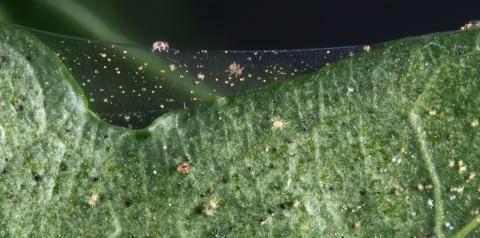Considering Non-Bt Traited Corn in 2017? Plan for More Scouting
February 8, 2017
If you're considering planting non-Bt corn this year, entomologists urge you to plan for the additional pest management practices (and associated costs) you may need to adopt, given this decision.
Handy Bt Trait Table Revised for 2017
January 19, 2017
The Handy Bt Trait Table for US corn production has been updated for 2017. It includes information on all registered Bt corn hybrids commercially available and summarizes which insects are controlled by which hybrids, which Bt and herbicide tolerance traits are expressed in different hybrids, and the Insect Resistance Management Refuge requirements associated with these hybrids.
Prepare Grain Bins and Equipment For Harvest
August 31, 2016
Proper cleaning of all harvesting equipment and grain bins and preparation of bins is a key to preserving stored grain quality. See these recommendations and lists of commonly used products for treating bins.
Soybean Stem Borers Feeding in South Central Nebraska
August 16, 2016
We are starting to see dead leaves caused by feeding of soybean stem borer larvae in south central Nebraska soybeans. No control measures are appropriate at this time, but monitor your fields and be aware that high populations of soybean stem borers may predispose the field to lodging and make harvest difficult.
Managing Spider Mites in Corn and Soybean
July 26, 2022
Recommendations for managing spider mites in corn and soybean, including treatment thresholds and insecticides, as well as discussions on the potential impact of beneficial insects, diseases and insecticide applications.
Identifying Spider Mite Damage and the Species Responsible
July 26, 2022
With growing reports of spider mites damaging corn and soybeans in Nebraska, it's important to check leaves closely, as many other crop issues can cause similar discoloration.
Watch For Grasshoppers in Crops
August 9, 2016
Growers are reporting grasshoppers in field borders moving into crop fields in parts of Nebraska. Here are the insect treatments to help you determine treatment need.
Be on the Lookout for Sugarcane Aphids on Sorghum
July 29, 2016
Nebraska grain sorghum producers are being advised to be on the lookout for sugarcane aphids. While this pest hasn't been a problem in Nebraska previously, it is in Kansas and moving north. The sugarcane aphid is light yellow to gray in color, with dark cornicles (“tail-pipes”) at the end of the body and dark tarsi (feet). Adult aphids can be winged or wingless.








